
How to Boost Your Digital Engagement? 7 Examples to Get Started
Last update: 28 June 2024 at 01:21 pm
Digital engagement is the manner in which your customers interact with you using technology and digital platforms. And it has become the need of the hour ever since online presence started gaining traction.
Brands are in constant search of methods through which they can create an engaging experience for their visitors and prospective customers. Because now customers are willing to pay for the overall buying experience.
According to research, 80% of customers place equal importance on engagement and experience along with the end product/service.
Many engagement strategies that you might’ve heard of have already become outdated. Since the digital framework is highly dynamic, a majority of customers feel brands need to transform their engagement strategy and keep up with the evolving customer expectations.
So now you know what your customers expect in digital engagement. But you also need to know the ‘how’.
How to Boost your Digital Engagement Strategy?
1. Know your audience
Before knowing how to engage your customers, you need to know who they are and at what stage they’re in the buying journey.
You cannot engage a customer on a channel they’re not present. Or engage them using content that’s not relevant. You need to know about the essential touchpoints and challenges to identify good opportunities for engagement.
Ask yourself, who is my ideal customer profile? It gives you insight into a wide range of customer characteristics including demographics, geography, and lifestyle.
To prepare the ideal customer profile, you can follow the following steps:
- Use customer profile templates
- Review your customer journey
- Focus on the problem the business is trying to solve
- Research your current customers
- Take into account customer feedback — good and bad
- Define important customer characteristics
- Analyze your buyer personas
- Use the ideal customer profile to optimize your digital customer engagement strategy
Example
An example of creating an ideal customer profile is via segmentation.
You can break down customer types into demographics, positions in the buying journey, core values, and preferred communication channels. This will help you develop a digital engagement strategy that resonates with all kinds of your customers.
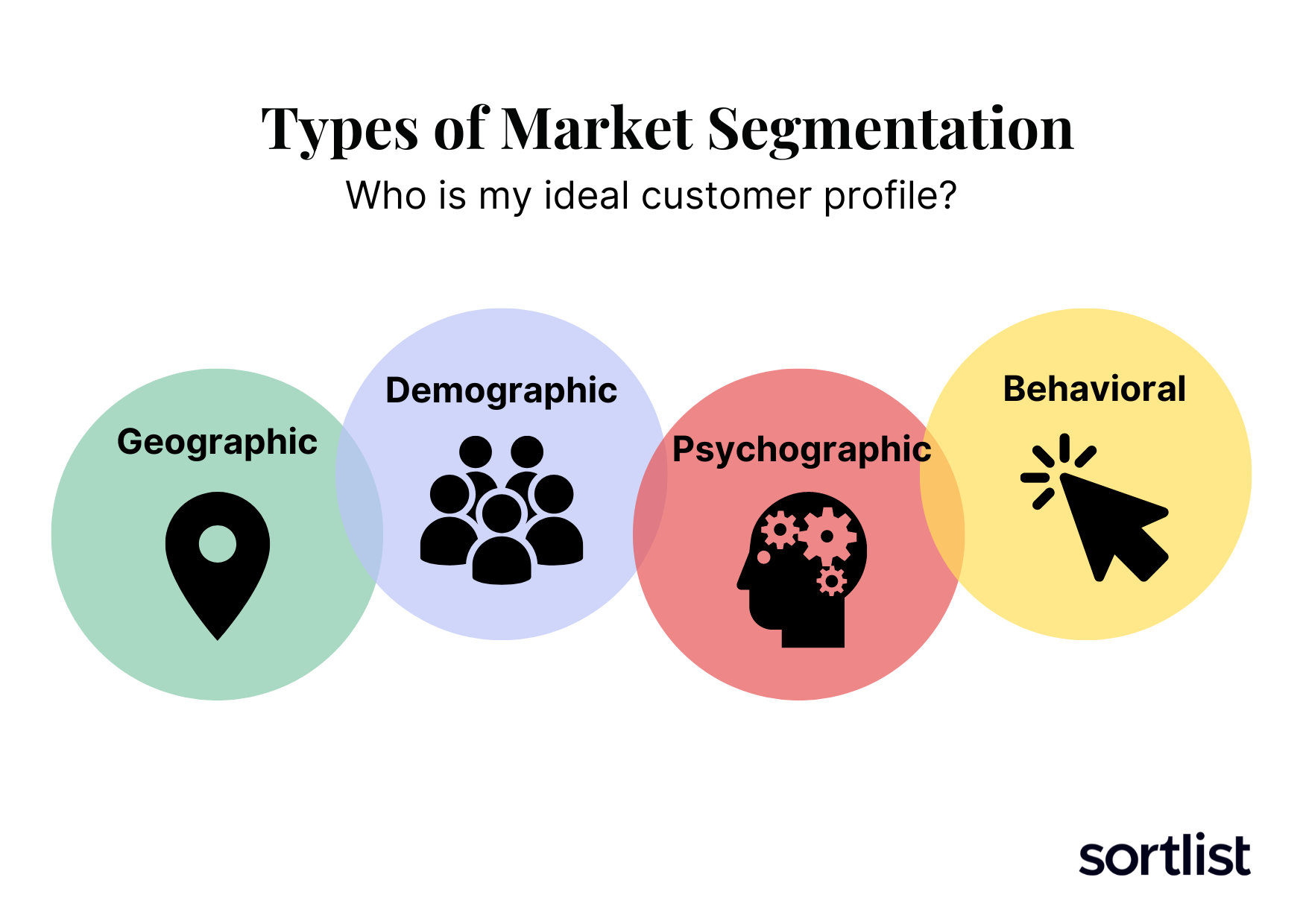
2. Think Digital Customer Engagement Across Platforms
You hear it all the time — meet your customers where they are. The only way you can do that is with an omnichannel presence and amplify efforts on every customer engagement platform.
Because customers start interacting with brands on one channel and then continue their communication on other channels. As a result, you have to build and manage relationships across platforms.
But it’s easier said than done, isn’t it? You built a presence on your website, social media handles, live chat, and physical store. How do you streamline your communication channels?
Fortunately, numerous automation tools allow you to foster omnichannel customer engagement, personalize your messaging and keep a track of your activities on these platforms. These are:
Conversational Automation
You can leverage conversational automation tools like simple chatbots that help you keep customers engaged on all your digital channels, around the clock.
Chatbot platforms also help you consolidate your bot communication and live chat communication across channels on a single platform. Some tools you can consider are Drift, LiveChat, etc.
Digital Asset Management
If you want to consolidate and manage your digital content assets in one place, you’d need a digital asset management (DAM) tool.
It helps you set up a centralized platform where related stakeholders can access all the digital assets like pictures, images, videos, GIFs, documents, and other creative files.
Social Media
Social media is one of the leading ways to foster digital customer engagement. In the same manner, social media automation tools also help you post and engage consistently on social media.
It enables you to automate the time and days of your posts on all channels and set things in motion rather than having to do it manually every time you want to post something. Some tools you can consider are Hootsuite and Sprout Social.
Email Marketing
Contrary to what many brands may believe, email marketing is not dead. In fact, it’s far from the opposite. Email marketing helps you scale your digital customer engagement while also keeping the personal touch.
Email marketing tools help you personalize your mass email campaigns and schedule emails during peak hours at an affordable rate. Some tools you can consider are ActiveCampaign and MailChimp.
Example
One of the many brands that have aced their social media strategy and digital customer engagement is the beauty giant Sephora. Itconnects its shoppers’ online purchases to their in-store tabs.
Their in-store beauty bag feature while shopping in-store helps customers considerably narrow down options so that they can make easy and quick decisions.
Looking |
Discover the most relevant agencies for your project based on your own specific requirements.
Find an agency!3. Personalize Customer Experiences
Although personalization has been a buzzword for a while now, it still holds equal importance as it did a few years ago.
Because personalization is the key that connects digital and in-storeshopping experiences. It provides the human touch that would otherwise be absent in virtual engagement.
71% of customers look for a personalized buying experience from brands.
Brands already are personalizing their ad campaigns, content, and emails. It can mean anything from showing a location-based advertisement to addressing the user by the first name in an email.
But personalization is also evolving and becoming more complex giving place to a new concept called hyper-personalization. To hyper-personalize, you start by listening to your customers at every stage of their buying journey. You collect data.
A lot of brands are highly reliant on data-driven marketing efforts to understand what the customer wants on digital channels, when they want it, and how they want it. Collect this data via previous purchases, customer surveys, feedback, and target audience research.
Gain buyer insights and tailor customer interactions to their liking, format, and tone, so that the customer knows that you’re in sync with their interests and can accurately recommend products and even narrow down your marketing efforts.
Example
Beauty products retailer Bliss offers personalized product recommendations on its digital channels after assisting the problem of a specific visitor.
If a visitor clicks on a cream meant for dry skin, it starts recommending other products that are meant for dry skin tones. Similarly, it highlights the benefits of the product by pairing it with a suggestive item.
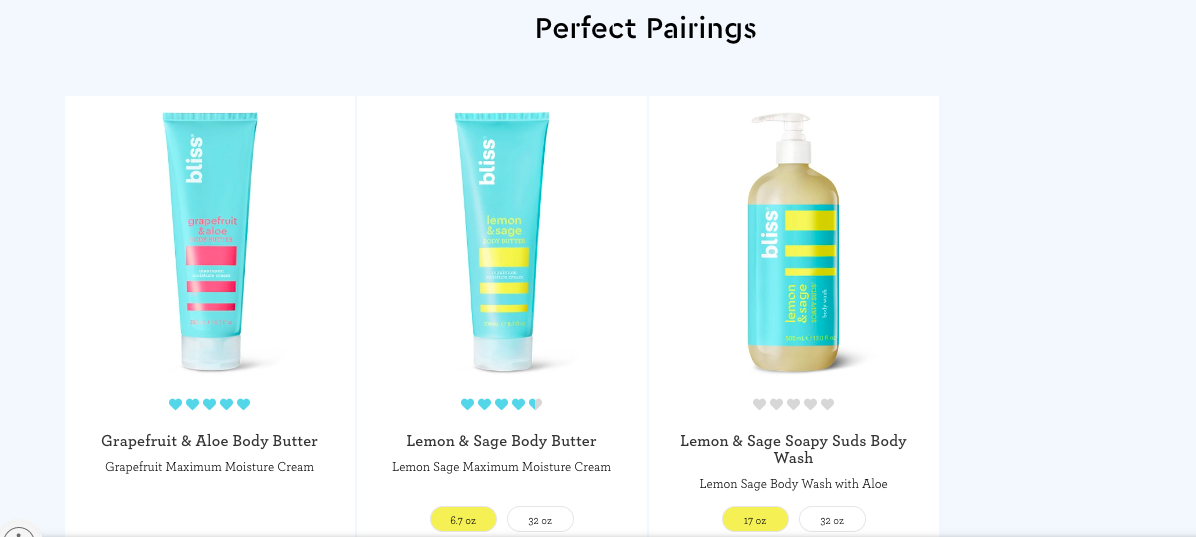
4. Create Relevant Content
It’s no secret that content marketing leads the engagement game online. In the world of Google, you need to stand out through your content so the customer can find you among a plethora of choices. And, we don’t mean just words but also posts, videos, webinars, etc.
But it’s only possible if the content resonates with the user. What does churning relevant content really mean?
It means preparing content based on the customer buying journey. Since you already know your customer profile, you need to segment them into:
- The top of the funnel (prospect who is completely oblivious to your brand),
- The middle of the funnel (prospect who is mildly aware of your brand), and
- The bottom of the funnel criteria (prospects and customers who are highly aware).
So you know, logically, you cannot target an awareness stage content to a prospect who’s at the bottom of the funnel the same way you cannot target a product update blog with a prospect who’s at the top of the funnel.
To ensure you engage customers at each segment, you can consider the following type of content:
Top of the Funnel (TOFU)
- Blogs and guides
- Checklists
- How to videos
- Social media posts
Middle of the Funnel (MOFU)
- Website marketing (A/B testing, conversational marketing, pop-ups, etc)
- Email marketing
- Search engine marketing (PPC ads, display ads, etc.)
- Social media marketing (including sponsored posts)
Bottom of the Funnel (BOFU)
- Product comparison guides
- Free samples
- Case studies
- Product-oriented blogs
Example
Canva has upped its content game with its Canva Design School. The content provides value to TOFU prospects by teaching them how to build images with minimal design expertise and without complicated technical know-how.
It also in turn does a great job of marketing its tool and showing all the design possibilities the tool has to offer and highly focuses on the customer experience.
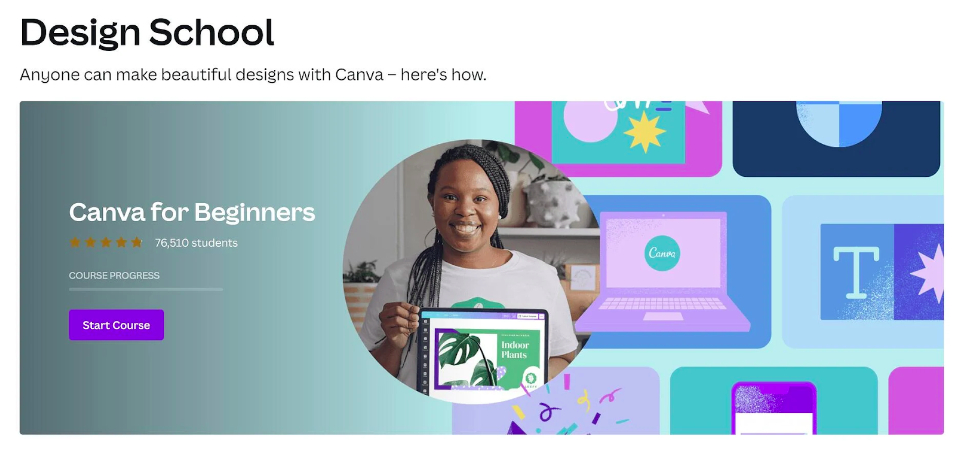
5. Embrace Social Media
Social media is at the core of your omnichannel strategy. It is a tool your customers use to engage with other users and brands alike.
For brands, it provides a wonderful opportunity to have real-time interaction with their prospects using a tone that resonates with users.
From running ad campaigns to celebrating milestones, social media is a one-in-all stop for users to like, comment, and share pictures, videos, podcasts, webinars, and more.
However, you need to ensure consistency and you can do so by automating your engagement on social media using tools like Hootsuite, Sprout Social, etc. There are also designing tools and content tools like Canva and Piktochart that help you create and post without expertise.
Example
Apple considerably increased digital engagement on Instagram via user-generated content. It created the #shotoniphone so contributors can promote the brand with their original content like images and videos.
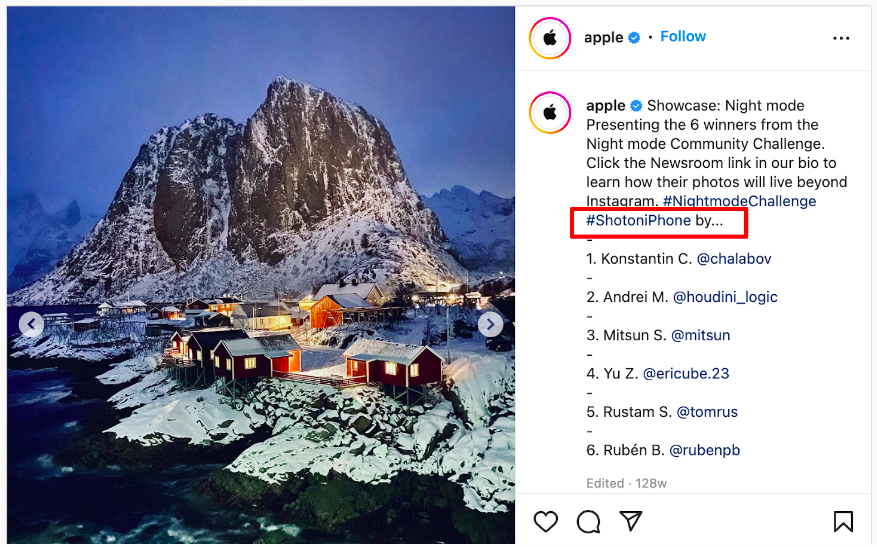
The hashtag currently has posts in millions and counting. As for Apple, it generated engagement just by using a social media feature and not having to pay anything.
6. Leverage Chatbots
Chatbots have been around for a while but their true value for digital engagement was realized during the pandemic. All brands now believe that a virtual assistant is a necessity.
The idea is simple. You cannot possibly capture the interest of every site visitor. You need to disperse tools that do that job for you.
Chatbots help you do just that. They:
- Capture the visitor’s attention and
- Engage them via conversations.
It eventually increases your conversion rate and helps you increase leads.
You can simply choose a no-code platform to build and deploy bots on websites and social media handles. Some of the platforms you can consider are Drift, Intercom, and LiveChat.
Example
Dominos has changed its online ordering system via its order placing chatbot called ‘Dom’. The bot, which is placed at the bottom right corner of its site, helps visitors locate the nearest store, place online orders, and customize orders all within the chat window.
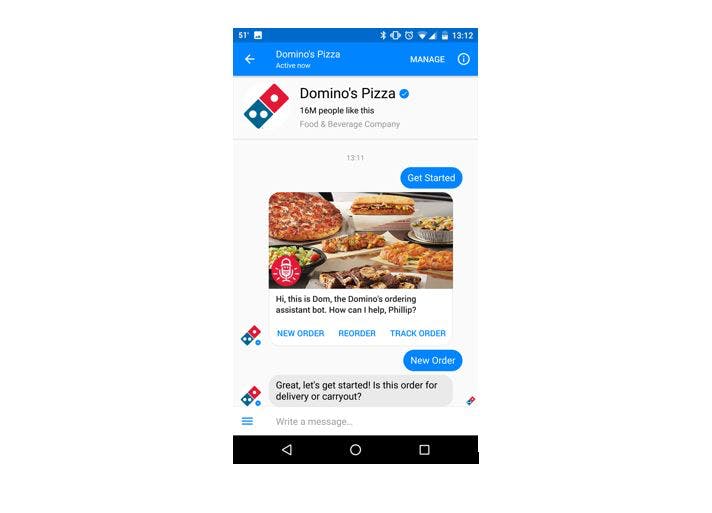
7. Consider a Loyalty Program
Most strategies here speak of engaging new prospects or customers. Between all that, we cannot forget the current revenue-generating customer base.
You would obviously know that the cost of acquiring a new customer is a lot higher—5 times to be precise—than simply retaining the existing ones. And while acquiring new customers is essential and efforts will be ongoing, you also need to give heed to your existing customers and engage them to stay.
Loyalty programs are the best way to do so. The core idea of such programs is that the more loyal the customers are, the more rewards they’ll get.
Some of the types of loyalty programs you can consider are:
- Points-based loyalty programs
- Tiered loyalty programs
- Paid loyalty programs
- Value-based loyalty programs
Example
Nike has come up with the NikePlus Membership program that provides users with special rewards for workouts, customized playlists, and personalized promotional offers like discounts, and early access.
It urges the users to continue shopping with the brand and lays a foundation for a long-term retention program.
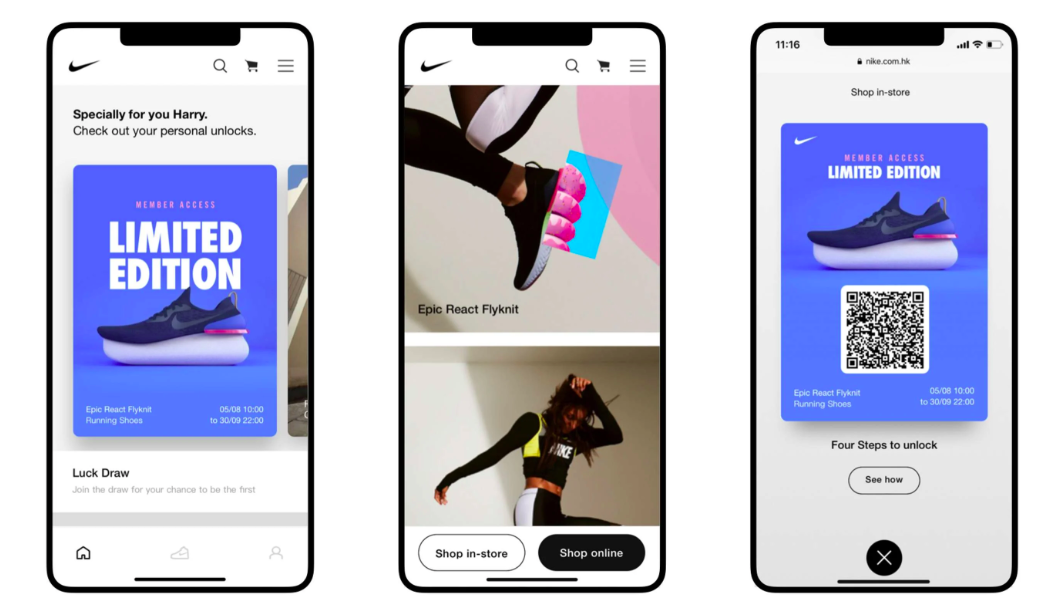
Finishing Thoughts
Some of the top takeaways from this article to drive your digital engagement are:
- Remember your goals and know your audience and you can know how to engage them.
- Build an omnichannel presence to reach where your customers are.
- Personalization is the key to any form of digital engagement.
- Simply churning out content won’t work—neither for SEO nor for digital engagement. Build content that resonates with the readers to initiate digital engagement.
- Any digital engagement strategy without social media is incomplete.
- Chatbots are the go-to digital customer engagement tool that increases website conversion.
- Don’t forget to engage existing customers. Provide loyalty programs for customer retention.
Finally, remember that digital customer engagement may be complex and not be immediately visible. A digital marketing agency can help you drive massive revenue from digital engagement and improve customer satisfaction.





